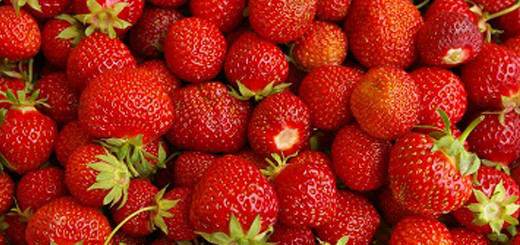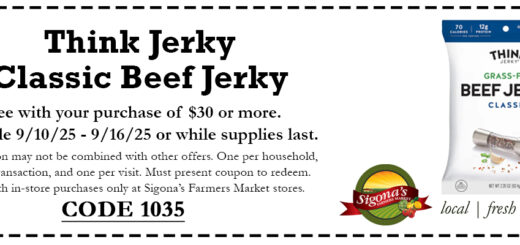Tips for Healthy Living
Tips for Healthy Living
We’ve partnered with III Pillars, a gym in Menlo Park which strives to create a one-on-one training facility. They believe that exercise, nutrition and restoration all play an equal role in achieving optimal health. — Carmelo Sigona
This one goes out to the ladies:
Healthy lifestyle choices to help eliminate discomfort
By Sara Gurka, ATC, CSCS, RKCII and Lillian Ito, CPT
Most women worldwide suffer from irritability, headaches, cramping, fatigue, and other PMS symptoms each month. Same goes for experiences during pregnancy, such as fatigue, constipation, leg cramps and insomnia.
Then there’s the kicker: menopause. This change is usually accompanied by hot flashes, mood swings, bouts of depression and weight gain.
Well, for the women that suffer these symptoms (and more than 50% of do) through the different stages, there’s hope! Studies show that leading a healthy lifestyle that focuses on nutritious food and weekly exercise can alleviate symptoms associated with PMS, pregnancy, and menopause. A healthy lifestyle can also help protect from cardiac disease, which is the leading cause of death in women.
Following is information and recommended exercises and nutrition suggestions that will help eliminate discomfort during these stages:
PMS
Nutrition: A lack of Vitamin B6 in your diet can increase PMS symptoms
- Foods high in B6: meat, brown rice, fish, whole grain cereals, chick peas
- Foods to avoid: refined carbohydrates, dairy, coffee, chocolate
Exercise: Yoga poses can help regulate blood flow, calm your mind, and increase blood supply to the pelvic area to help with cramping and muscular tightness. Try these:
Straddle Stretch
–
–
-Straight back (no rounding)
-Hold gentle stretch 30 sec-1 min
–
–
–
–
Quad Set
–
–
–
Recommended because fluctuating hormone levels loosen ligaments increasing risk of knee injury.
-Straight back, sit into hips/heels
-Small step out to challenge knee stability
-10 reps each leg, 2-3 sets
–
–
–
–
Pregnancy/Birth
Pre-natal Exercise: these exercises can help:
- Decrease common prenatal discomforts such as constipation, swollen extremities, nausea, leg cramps, insomnia, fatigue, back pain, and varicose veins
- Improves posture, body mechanics, facilitates circulation, reduces pelvic and rectal pressure, and increases energy levels
Wall-sit
–
–
–
– Hip and knees at 90 degrees
-Sit as low as comfortable
-Keep lower back in contact with wall
-Hold for 3-5 sec, repeat 10x
–
–
–
–
–
–
Quadruped Reach
–
–
-Neutral Spine
-Lift opposite arm/leg keeping hips level
-Hold 3-5 sec, 10x per side
–
–
–
Post-Natal Exercise: In general:
- Doctors recommend waiting 6 weeks after birth before returning to exercise
- In 9 months to a year, leading a healthy lifestyle will help to normalize your body composition
- You can do most of these exercises with a weight ball or use your baby instead!
Alternating Heel Tap
-Draw belly button in towards ground
-Hip and knees at 90degrees
-Hold baby or ball towards ceiling
-Slowly lower one heel to ground
-Hold neutral spine
-10x per leg
–
Bridge with Baby Press
-Feet hip width apart
-Knees in line with middle toe
-Squeeze glutes and lift hips
-Press ball/baby towards ceiling
-Bring ball/baby to chest and lower hips
-10 reps, 2-3 sets
–
–
Menopause
Osteoporosis Nutrition: A wide variety of foods can help to build healthy, strong bones:
- Vitamin D: organic eggs and milk
- Calcium: broccoli, collard greens, turnips
- Magnesium: whole wheat, beet greens, pumpkin seeds
- Potassium: apples, legumes, bananas
Osteoporosis Exercise: Simple exercises during the menopausal years, when women are more susceptible to developing osteoporosis, benefit the body in a number of ways:
- Walking will stimulate new bone growth by loading your pelvis and legs
- Bone cells are stimulated to reproduce when loaded
- Bone cell growth is responsible for strong tendons, ligaments, and muscle tissue surrounding the bone
Chair Sit
Performing a chair sit will help to load your spine and strengthen your whole body
–
-Start seated on stable surface
-Forward lean from hips
-Keep your back straight
-Drive through heels to stand position
-Slowly lower to starting position
-Stay in neutral spine
-Can hold weight to chest to increase load
-10reps, 2-3 sets
–
–
–
Stork Stance
Stork stance will improve balance to help prevent falls
–
–
-Stand facing wall for support
-Slowly raise one knee
-Put weight through ankle
-Hold 30sec-1min, 2x/leg
–
–
–
–
Cardiovascular Disease is the leading cause of death in women. You can help prevent heart disease by making positive changes to your diet and exercise routine.
Nutrition: Mediterranean and Asian diets will help promote a healthy heart.
- Mediterranean Diet: grains, vegetables, fish, olive oil, low fat foods
- Asian Diet: tofu, sea vegetables, adzuki and mung beans, green tea, broccoli
Exercise:
- Exercising 30 minutes a day, 3-4 days a week will increase cardiovascular health
- Frequency of exercise is more important than duration
- Activities that increase heart rate: walking, hiking, biking, gardening, cleaning, etc.


















